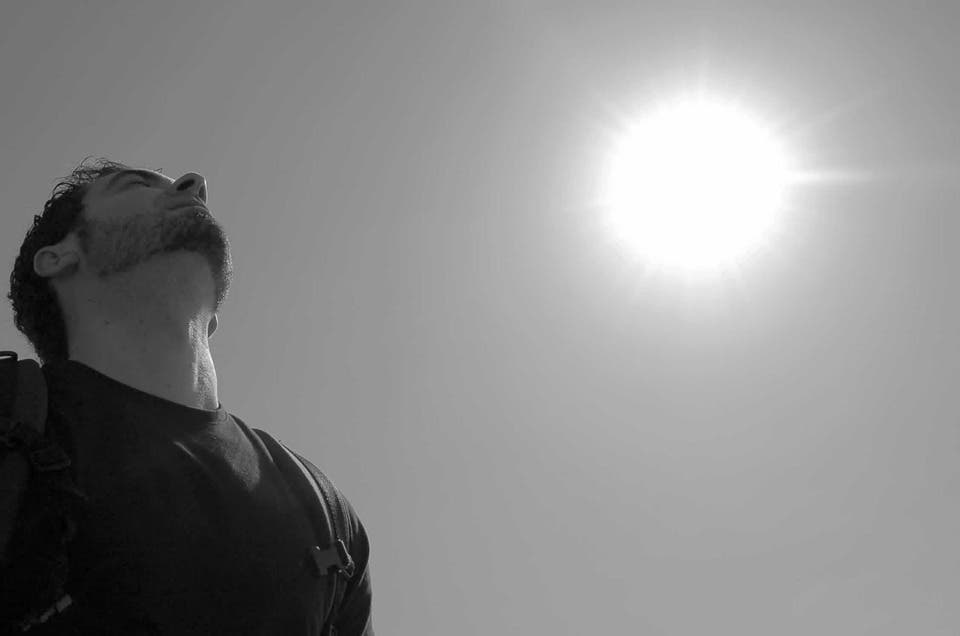You wouldn’t expect something like a breathing technique to improve radiotherapy outcome — but it does.

Radiotherapy can be carried out in different ways, depending on the circumstances and objectives, but the main idea is the same: a machine directs beams of radiation at the cancer. There are also radiotherapy implants and injections, but most commonly, the radiation is administered through an external machine. Radiotherapy is extremely targeted and can be very effective at killing off cancer cells, but it also depends on how still the patient can be.
During treatment, multiple beams are directed from several different angles to intersect at the tumour. The patient needs to be as still as possible for the targeting effect to work. If the patient moves even slightly, the therapy loses some of its effectiveness.
Since a radiotherapy session can last from 15 to 60 minutes, lying perfectly still is not exactly an easy task.
With every breath, your chest and abdomen can move by several centimeters, and to a lesser extent, other parts of the body can also be moved by breathing.
In order to reduce this impact, researchers at the University of Birmingham recruited a cohort of 30 volunteers, both male and female (aged 20-25), and taught them a breathing technique. For a few minutes, they were given oxygen-rich air to breathe, increasing the level of oxygen in their blood. The carbon dioxide level in their blood was also lowered through hyperventilation with a facemask.
This process allowed them to hold their breath safely for much more than normal. Then, the training commenced and was carried out over sessions spread across several days. After the practice, participants learned to hold their breath safely and consistently for up to 6 minutes.
This might come as a shock, but researchers say it’s perfectly possible, with even a short amount of training. Dr. Mike Parkes, from the School of Sport, Exercise and Rehabilitation Sciences at the University of Birmingham, explains:
“People often believe that it’s only really possible to hold your breath safely for between 30 seconds and a minute, but in fact there are no risks to a five-minute breath hold under carefully controlled clinical conditions.”
Then, participants moved on to the next step: holding their breath several times across a longer period of time. They were able to hold their breath for four minutes, and then, following a break, do it again — 8 times in a row! After this, they were still able to do one final push of 6 minutes.
If a radiotherapy session lasts 20 minutes, then it would be fairly easy for participants to breath-hold for a total of about 13 minutes (3 breath-holds). In longer sessions up to 60 minutes, patients could breath-hold for up to 41 minutes (9 breath-holds). Another advantage of this technique is that if the breath-holding is stopped for one reason or another, it can then be resumed quickly.
Researchers say that this breath-holding can help patients lie still for longer periods of time, thus improving the efficiency of radiotherapy sessions.
“Radiotherapy is still a key treatment for tackling cancer, but success depends at least in part on patients being able to remain as still as possible while the treatment is ongoing. This is a particular challenge for patients being treated for cancers in the chest and abdomen. These regions can move up to 4cm each time a breath is taken, limiting the accuracy of the radiotherapy.”
However, while this approach certainly holds promise, implementing it in a practical scenario will likely be much more challenging. For starters, participants in this study were young, which is not often the case in cancer patients. Furthermore, holding your breath as part of a scientific trial is one thing — maintaining the same level of concentration during an actual radiotherapy session is much more stressful. Nevertheless, researchers want to further explore this idea, and potentially implement it in a clinical setting.
Journal Reference: Parkes et al (2019). ‘The feasibility, safety and optimization of multiple prolonged breath-holds for radiotherapy’. Radiotherapy and Oncology.









